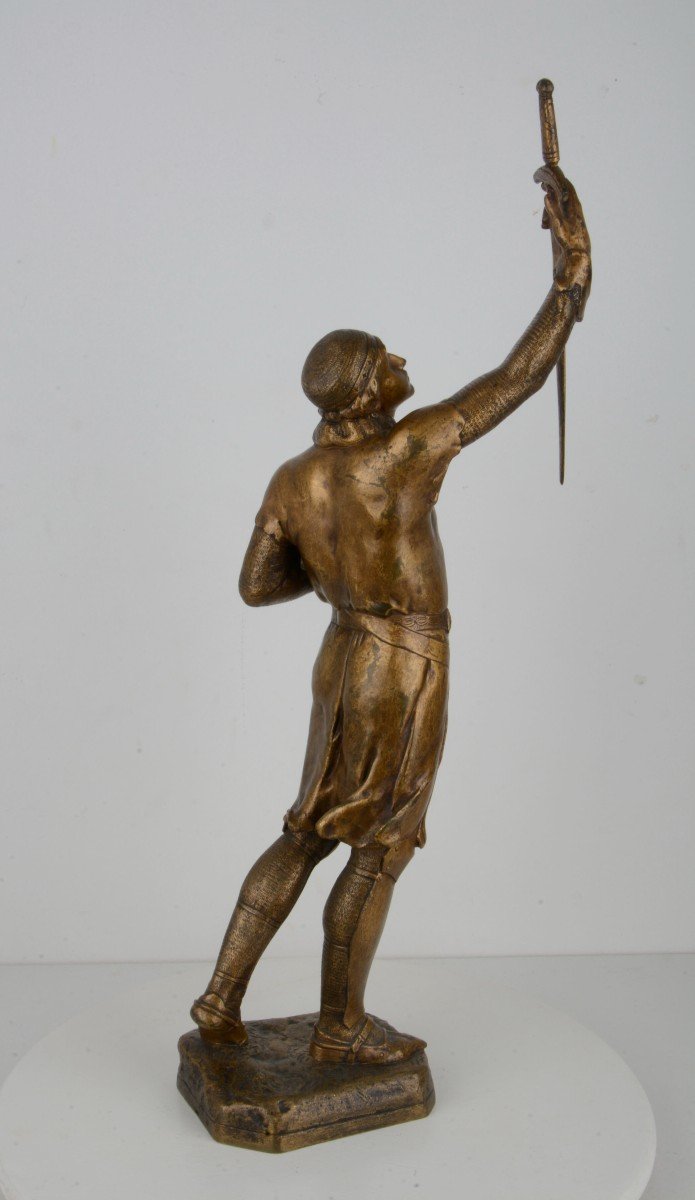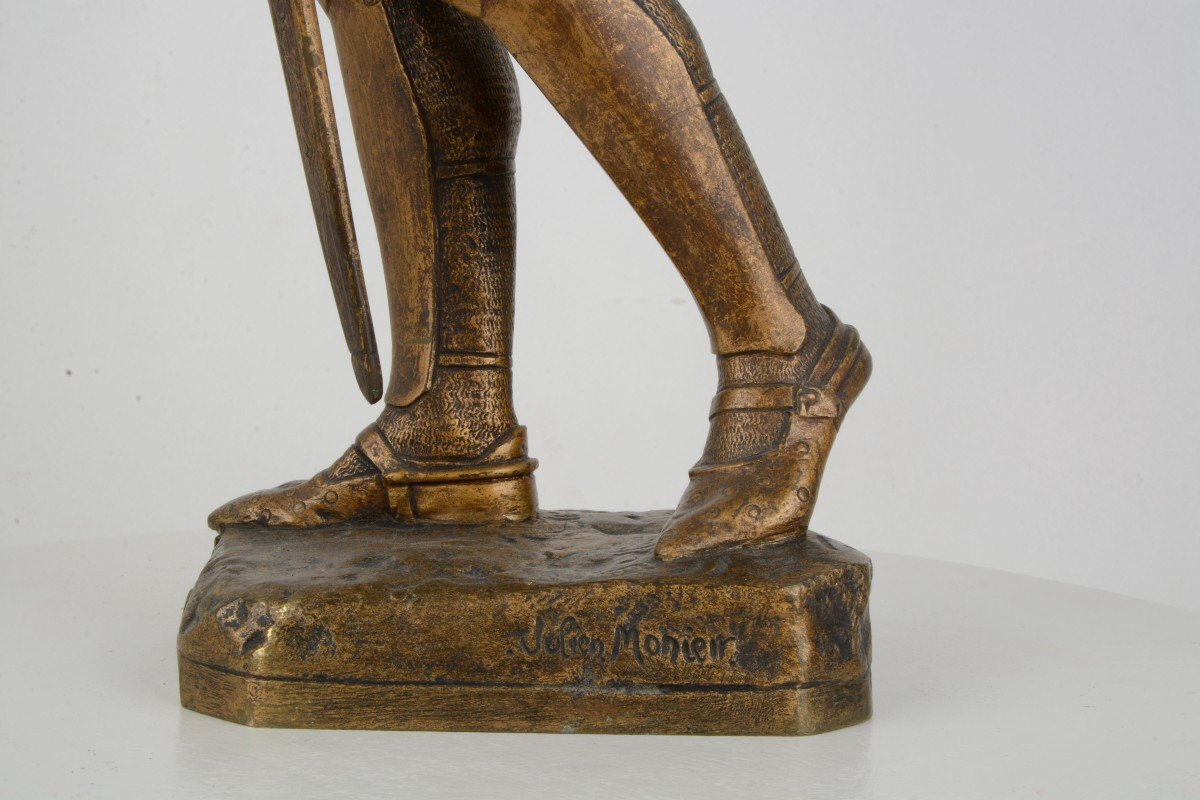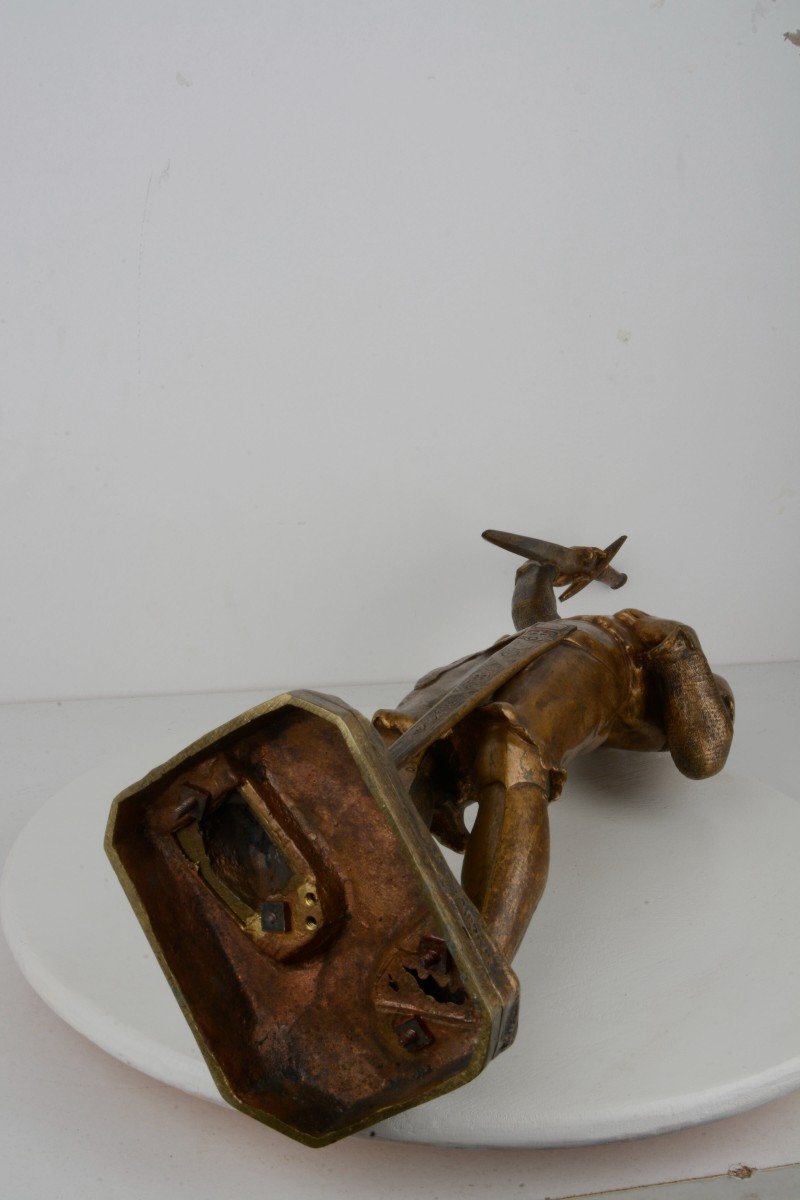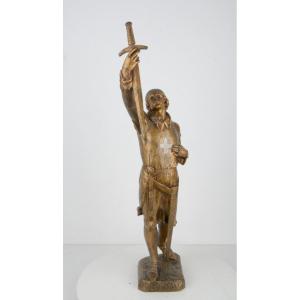Between 1096 and 1270, eight crusades set out from the West to arrive in the East. Preached by Pope Urban II during the Council of Clermont, and supported by the numerous and fiery sermons of Saint Bernard of Clairvaux, this first Crusade aroused immense religious enthusiasm. It was a question of defending the Holy Sepulchre, and the Christians of the East and thus of gaining indulgences (that is to say the total or partial remission before God of the temporal penalty incurred because of a sin already forgiven. From the first Crusade were born the Frankish Kingdoms of the Orient which, for two centuries, dominated the Orient.
The impact of the Crusades on the West was colossal, whether economically, religiously, culturally, technically or even medically.
Today, only a few paintings and sculptures recount this bitter episode in our history.We know of the sculptor Julien Monier that he was active for a good twenty years between 1900 and 1920. He signed, and often dated, his works, some of which were published by the Susse house.He sculpted an astonishing Egyptian Dancer, in a very Art Deco style, and dated 1920. One of his most famous works, along with the Credo, is his Thinker which is reminiscent of that of Auguste Rodin (sculpted in 188 0, and enlarged to become monumental in 1904). These two works, the Credo and the Thinker were produced the same year, in 1904. A few busts of women, including an Ingénue, of a very classical style, bring a lighter and more classical touch to his work. There is also something surprising about him, both in his treatment and in his subject: the American Field Ambulance. This group depicts an American doctor supporting a wounded soldier. This extremely rare work is dated 1916 and located by its author in Wesserling (Alsace).
COPYRIGHT














































 Le Magazine de PROANTIC
Le Magazine de PROANTIC TRÉSORS Magazine
TRÉSORS Magazine Rivista Artiquariato
Rivista Artiquariato